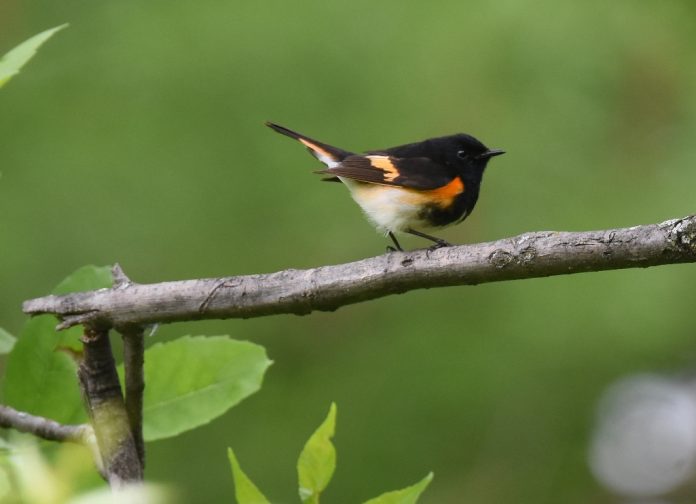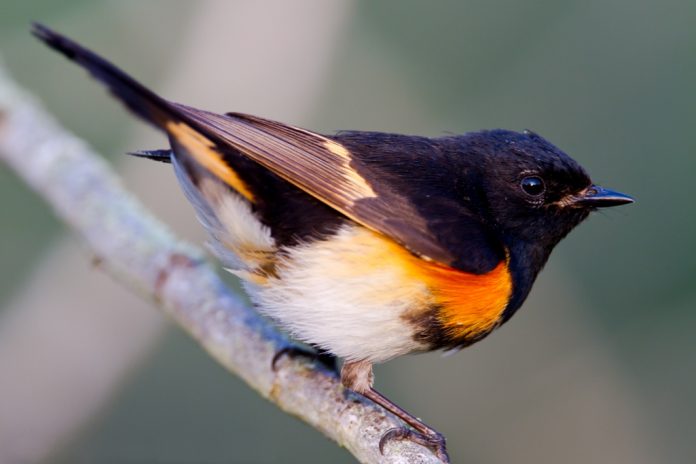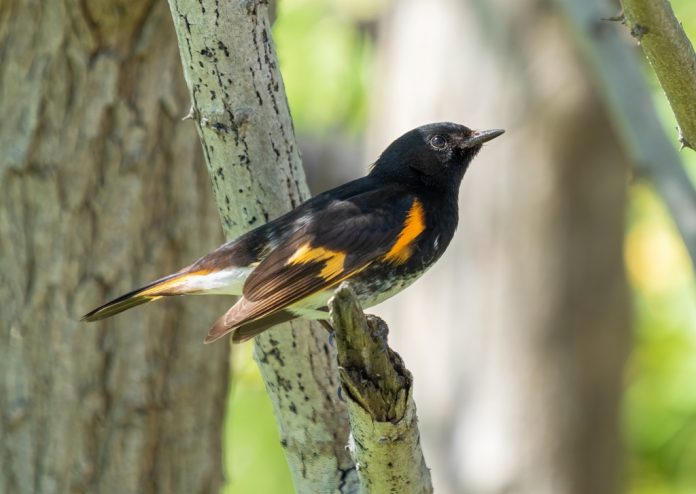The American Redstart is a transatlantic vagrant. It is a rather flycatcher-like bird with a prominent tail that is often held cocked and partly fanned to expose extensive bright orange or yellow patches on either side of the tail base. The adult male bird has a black head, breast, and upper parts throughout the year, and the tail, wing, and breast side patches are orange.
Other plumages are much less striking, consisting of grayish-olive upperparts, grayish head, and whitish underparts, but the yellow or pale orangey patches on side of the breast and yellow wing and tail patches are distinctive and make confusion very unlikely.
Dullest first-winter females may lack yellow wing patches and have only dull pale yellow patches on the sides of the breast, but distinctive tail patterns are always present. Flits and flycatchers within the canopy of thickets and trees, often briefly hovering to expose striking tail patterns, or perching with wings slightly drooped and tail cocked and partly fanned.
Adult males and females differ markedly. However, the first-winters/summers resemble adult females, but young males have yellow extending onto primary bases (yellow patch usually, but not always, limited to the bases of secondaries in adult females) and often some black mottling in first-summer plumage, while first-winter/summer females are prone to lacking any visible yellow in the wing.
American redstart calls include a thin, clear ‘tzit’ and a hard-clicking ‘chick’ or ‘tsip’. The song is variable; usually, a high, lisping ‘tsee-tsee-tsee-sir’ with the last note down slurred, but it also has a version with an up-slurred last note and a Black-and-White Warbler-like ‘teetsy-teetsy’. American Red Start is a vagrant of Western Europe and the Azores. In its natural range, it breeds in fairly open deciduous and mixed forest (especially second growth), woodland edges, groves, and thickets.
Related Reading: Plumbeous water redstarts









